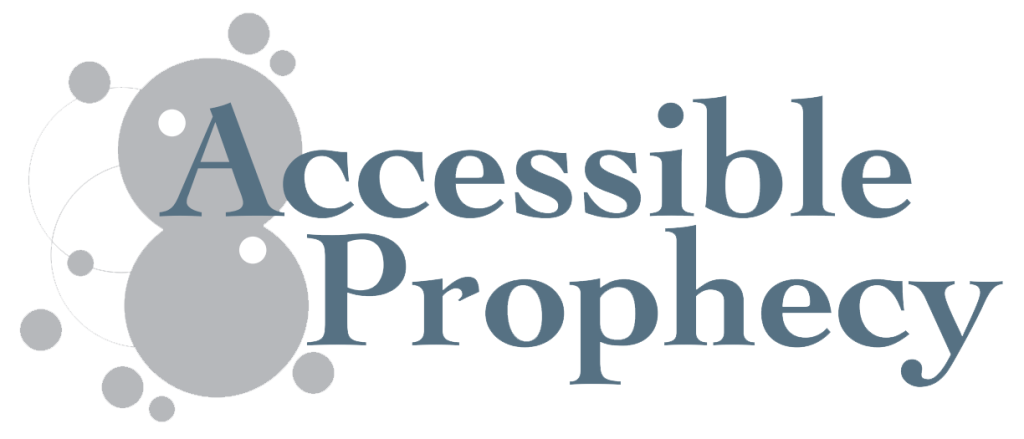As we saw in the previous blog, one way of making sense of the Old Testament prophets is to summarise their ministry according to these two dimensions:
- Vertical dimension: focused on protecting and maintaining the covenant relationship between God and his people.
- Horizontal dimension: focused on God’s concerns in the world.
In this blog I’m going to unpack the Horizontal dimension a bit more, and look at how the prophet’s passion for God was often channelled into a passionate engagement with the world around him. Because, at the end of the day,
You can’t worship God and be unmoved by the things that move God.
The prophets of old knew both the ecstasy of being caught up with the glory of God and the agony of seeing the broken world from God’s perspective. For many of them, as they encountered God they simultaneously encountered the divine pathos: the deep emotions in the very heart of God. And a common outcome of this was the prophet being used by God to challenge the various injustices prevalent in the society of the day.
The best place to start is with Moses. Thousands of years may have passed but his embodiment of the prophetic role, along both dimensions, still resonates clearly. Moses heard from God and became the Lord’s friend, and it’s Moses’ ongoing relationship with God that marks him out as the prototype for all other prophets. And when God was moved by the suffering of the Israelites and initiated his great rescue plan he chose Moses as his prophet:
“And now the cry of the Israelites has reached me, and I have seen the way the Egyptians are oppressing them. So now, go. I am sending you to Pharaoh to bring my people out of Egypt” Exodus 3:9-10
Moses stands as a towering figure over the Old Testament. The Exodus story is the narrative of the Old Testament and Moses is the protagonist of the Exodus narrative – the great archetypal story of an enslaved people becoming free. God raised up Moses as his representative, commissioned to lead his people, and to confront the evil regime of Pharaoh. Through Moses, the first prophet, God’s reality crashed headlong into the dominant imperial culture, into Pharaoh’s version of reality, so that the false gods were exposed and so that God’s people could break free from oppression and exploitation.
Moses gives us a great framework for understanding the Horizontal aspect of prophetic ministry and helps us make sense of how many prophets after him engaged with God’s heart for social justice. In the Old Testament we see that part of the prophet’s role was as political commentator and activist: concerned with challenging empire and society, and taking the side of the marginalised and vulnerable. They spoke truth to power, and experienced anguish at injustice and oppression.
Amos makes this very clear:
Let justice roll on like a river… Amos 5:24
The Horizontal dimension of the prophet’s ministry is about calling for change: for societal transformation so that the poor, downtrodden and marginalised are protected. This is about advocacy for the powerless and being prepared to stand with the oppressed. The Hebrew prophets were not afraid of emphasising the need for God’s people to live ethically and to love justice.
“Is not this the kind of fasting I have chosen: to loose the chains of injustice and untie the cords of the yoke, to set the oppressed free and break every yoke?” Isaiah 58:6
Something that has helped me make better sense of the ministry of the Old Testament prophets, especially in the Horizontal dimension, is Walter Brueggemann’s remarkable book “The Prophetic Imagination” and his insight into the prophet’s role of nurturing an alternative consciousness to that of the dominant culture. It’s a two-step process:
1. Criticise The prophetic task is to first of all name the realities of brokenness, exploitation and injustice. This means being able to stand apart from the prevailing culture and being able to speak to it, with eyes to see and ears to hear. The prophet has to be prepared to lament, to allow God to “break my heart for what breaks yours” and to then to name things for what they are.
2. Energise The second part of the prophetic task is to energise and empower God’s people by ministering hope and expectation, and propelling them into godly action. This is the prophet helping people to imagine an alternative to the status quo and anticipate God’s renewal of all things. The prophet helps us stay attuned to God’s promises and remind us that God is faithful.
In holding these two together – criticism and energising – the biblical prophetic tradition challenges the status quo of oppression and injustice and enables God’s people to embrace an alternative way of thinking and acting.
What does this mean for us?
One thing we can take from the prophets of old is that an embrace of prophetic ministry is not just about seeking God’s voice and presence, but also being prepared to represent his holy concerns. As we pursue God’s heart we will certainly encounter his heart for justice and righteousness. A mature prophetic lifestyle is about being first prepared to sit with God and lament, and then to rejoice with God and dance upon injustice.

